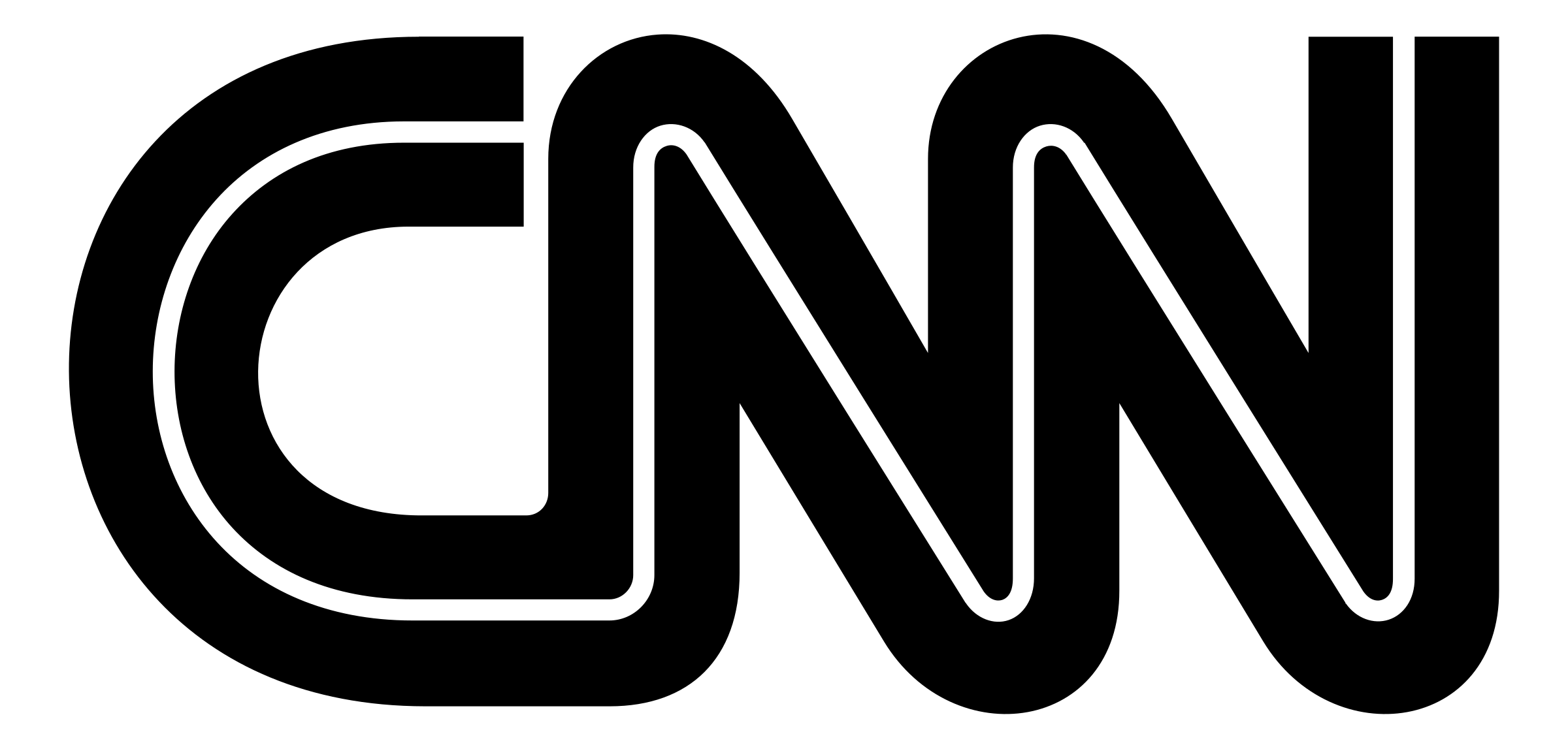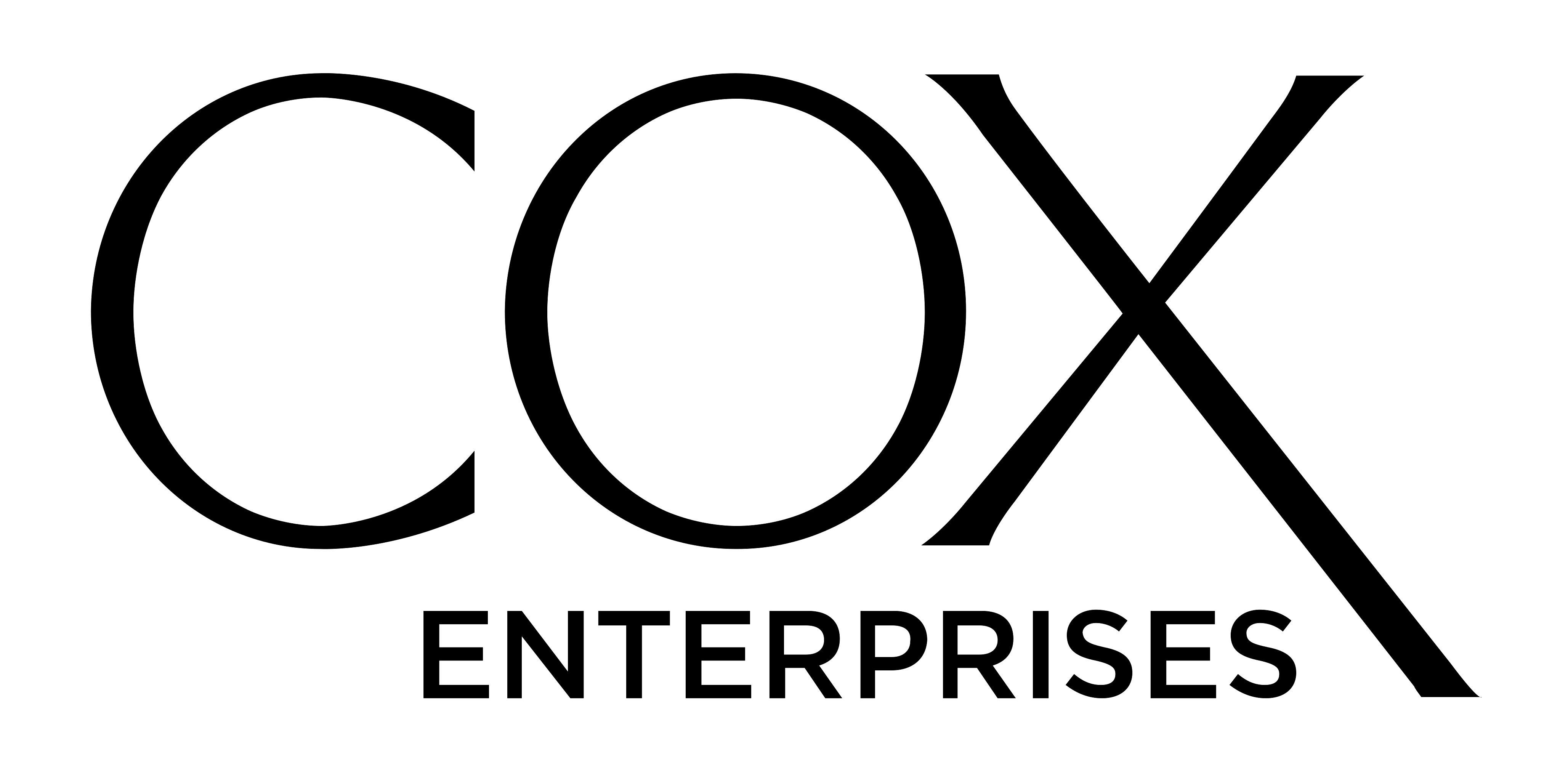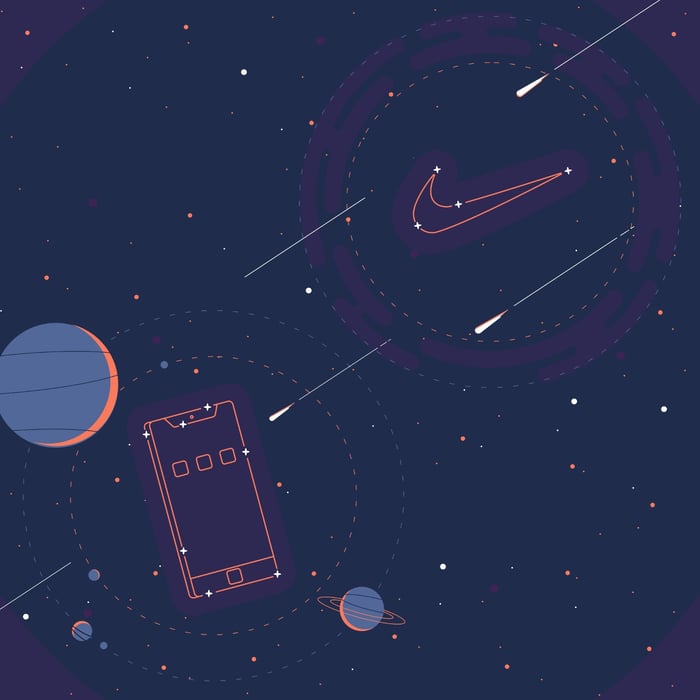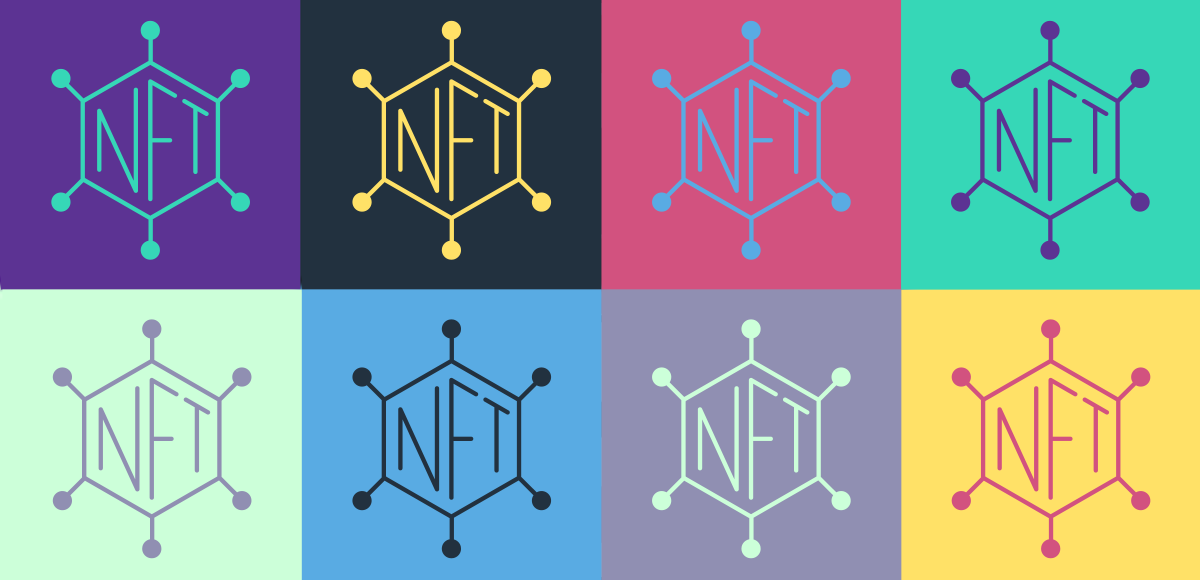Elevation
Disciplines
About
Thoughtful design, with an adventurous spirit.
Clients




















This post written by Elevation’s Creative Strategy Director, Brett Rakestraw, was originally published on Brandingmag.
The concept of brand started simply enough as a way to differentiate one product from another, a mark to identify the maker. By the late 19th century, laws were established in many countries to legally protect the use of branded marks, including logos, names and slogans. But, as product choice exploded through the industrial revolution, logos became more about differentiation than identification. As product quality began to even out with modern manufacturing, a familiar product logo was no longer enough to win over consumers in competitive markets.
So, in the 1950’s brand marketing was born. Brands began projecting themselves as a collection of ideals and promises that aligned with the consumers they were courting. Consumers began to identify themselves more and more by the brands they were loyal to. In this way, brand loyalty became a two way street where customers were willing to stick with and support a brand as long as the brand kept in line with the ideals of those customers.
Today, many brands are more recognizable by the type of customers they have than by the products they sell. Take the iconic motorcycle brand Harley Davidson, you can likely picture a typical Harley owner more easily than you can picture any particular Harley Davidson model, or how it compares to other motorcycles in the market. If you don’t picture yourself to be one of these people, you probably won’t buy a Harley regardless of the quality or price.

Read the article on our blog here.
A skyscraper needs a sturdy foundation. A towering oak needs deep roots. A Crunchwrap Supreme needs a crispy tostada.
And a great brand needs a great core.
As we covered in our Elevation’s Guide to Brand Building overview, the core is the most important element of your brand. It’s what everything else revolves around. Your brand’s core guides your business decisions, visual identity, marketing strategy, and pretty much anything else your company does. It provides the touchstones that attract brand ambassadors and turn customers into advocates.
If you do nothing else, focusing on your core can transform the way you approach branding, product development, and even your company culture.
But building a brand is a little like getting washboard abs: you have to put in work to have a great core.
So, how do you make a core that’s not just solid, but amazing?
In this part of Elevation’s Guide to Brand Building, we’re going to deep dive into every element of your brand’s core. We’ll let you know what your brand’s core is, provide examples of companies with amazing cores, and give you an exercise on how to better define your core to build a strong and meaningful brand.
What is your brand’s core?
Your brand’s core is a combination of your brand’s mission, vision, purpose, values, and point of view. It is the reason your brand exists. It is the very essence of a brand.
Whether you know it or not, your brand’s core influences everything you do now and provides a roadmap for where you’re headed.
The core is the foundation around which everything is built. It’s essential for growing a sustainable brand with a strong audience orbit. The stronger the core, the stronger the pull a brand will have.
A brand’s core isn’t a product, a name, or a logo. It’s a set of ideals that every employee and brand ambassador can embrace. A strong foundational core is woven into company culture and all brand decision making. It’s reflected in the people you hire, the messages you send, and the ways in which your brand affects the world.
Needless to say, the core is the most crucial part of your brand.
The importance of a good brand core

A planet is nothing without a strong core. Neither is a brand. A planet with no core is just space dust, aimlessly drifting until it’s pulled into another’s gravitational pull. This is what happens to brands that only focus on surface level aesthetics. They endlessly chase trends without establishing a solid identity.
You could have a million followers on social media and a logo created by the top designers in the world, but you will still be adrift if your brand core isn’t well defined. Even if you have success now, it will be temporary if it isn’t built around your core. Brands with strong cores know how to react to dramatic shifts in the market and how to adapt to new trends while staying true to their mission. A strong core gives you the ability to play the long game and remain successful over time.
It is critical to work on your core, as it influences everything you do. It has a direct relationship with your atmosphere (visual and verbal elements) and your orbiters (marketing content and loyal fans), as outlined in the other sections of Elevation’s Brand Building Guide.
A strong core can also help you differentiate yourself from competitors. It can be the difference between a brand being seen as a commodity, or being seen as a valuable and trusted partner. People want to align themselves with brands that share their values and beliefs, and a good brand core can help you build relationships with customers who will buy into your mission.
The elements of a brand’s core

What are the elements of a brand’s core?
- Mission: Your brand’s overall goal. What do you seek to accomplish? We’ll get more into crafting an effective mission statement below.
- Vision: What do you believe about the future and what’s possible? What do you want the world to look like? A brand’s vision is its long-term aspirations, typically in terms of how it will impact the world or its industry. It is a more ambitious statement than the mission and sets the direction for the company’s growth.
- Purpose: The reason why your brand exists and the why behind your mission. How is your brand making the world a better place? What gets you excited about what you do? When considering your purpose, think in terms of impact, rather than literal services. For example, an accountant could describe their purpose as “Provide financial guidance and maximize tax returns” Or they could describe their purpose as “To give my clients their time back and provide financial peace of mind so they sleep better at night.” While both are accurate, the latter example is more meaningful.
- Values: What does your brand believe in? What qualities do you want to exude as you operate? Essentially, these are the ethics of your brand. A few examples: Integrity, innovation, social responsibility, respect, equality, education, work-life balance. What you believe in will inform how you operate and create a cohesive company culture.
- Point of View: This is how your brand sees the world and its industry. Everyone has a unique perspective, and so does your brand. Are you optimistic? Do you see things with a sense of humor? What about the world needs to be improved? Essentially, these are your opinions about the world. A point of view should reflect the company’s values and can be used to differentiate it from competitors.
Think of your brand in terms of personality
To put it another way, the core elements make up a brand’s personality. Just like our own personalities, a brand is best served to be an honest representation of itself, so an audience can perceive who a brand truly is.
A good personality doesn’t have to be one thing in particular. Variety of personality is key for brands. Knowing your brand’s personality and promoting its best traits builds a relationship with your audience. Like in movies or stories in the stars, a brand can benefit from finding an archetype (not a stereotype) that helps to shape how the brand communicates and how brand decisions are made.
Here a few keywords to consider when thinking about your brand’s personality:
- Warm
- Inviting
- Professional
- Fun
- Casual
- Sleek
- Cozy
- Progressive
- Traditional
- Loud
- Quirky
- Current
- Retro
- Young
- Mature
None of these keywords are inherently better than the others. For example, cozy and sleek are polar opposites. Cozy is great if you’re a bed and breakfast. And sleek is great for a tech company. But these brands wouldn’t be well served to swap keywords. Your brand’s personality needs to be in alignment with your mission, vision, purpose, values, and point of view.
Most importantly, it must be inspired and authentic.
Are you unsure what your brand’s personality is? To help you get started, let’s look at a few examples of brands that have successfully built their core.
Core Case Study 1: Patagonia
Mission: “We’re in business to save our home planet.”
Vision: “A world where people live in harmony with nature.”
Purpose: “To use business to inspire and implement solutions to the environmental crisis”
Values: Authenticity, Environmentalism, Quality
While Patagonia is known for making high-quality clothes and gear for outdoor enthusiasts, the true value in the brand lies in the fact that millions of Patagonia fans connect with and extend the brand over a shared sense of purpose to save the planet. This is one reason why the brand is so special – it has a deeper purpose that resonates with its customers.
And hey, if you can look good and feel comfortable while doing it… then bonus, Patagonia has some jackets you might be interested in.
Case Study 2: LinkedIn
Mission: “To connect the world’s professionals to make them more productive and successful.”
Vision: “To create economic opportunity for every member of the global workforce.”
Purpose: “To help people make the most of their professional lives.”
Values: Relationships, Integrity, Collaboration
LinkedIn has become the go-to network for our professional personas. While many other social networks are currently adding support for trendy features that undercut their original purpose, LinkedIn stays focused on their mission through a feature set targeted to professionals, such as creating resume-like professional profiles and connecting employers with potential hires
Their core guides and shapes their product, and it’s why our Director of Strategy Brett knows to put his thoughts on the future of technology and creativity on LinkedIn and keep his viral dance routines on his super-secret TikTok account.
Case study 3: Kickstarter
Mission: “To help bring creative projects to life.”
Vision: A world where every creative idea has the opportunity to become a reality
Purpose: Empower people to bring their creative projects to life by connecting creators to their most ardent fans
Values: Creativity, Community, Opportunity
While there are many crowdfunding platforms, Kickstarter has differentiated itself as a major financial resource for creative projects. The platform gives creators an opportunity to bring their ideas to life by connecting them with a large pool of potential backers. This has resulted in the creation of countless projects, from board games to major motion pictures.
Kickstarter has enabled a new era of creative collaboration and innovation through making creativity a cornerstone of their brand. Writers, filmmakers, podcasters, arists, and other creative individuals are drawn to the platform because their values are in total alignment with Kickstarter.
Mission: Statement
Your mission, should you choose to accept it (and you should), is to write a great mission statement for your brand. If you’re building a new brand, it’s where you should start to form your core, as it will inform the rest of your brand’s elements. If you are working on an existing brand, it’s always worth revisiting your mission statement to see if it could be elevated in some way.
A great mission statement should outline the goals of the brand with a point of view, while defining how the brand will benefit society or its audience. Your mission statement should be clear and concise, but try to avoid specific product details or financial goals with the mission statement.
The exercise in the next section can help start the conversation around what your brand mission could be.
Core Exercise: In a World
Imagine your brand is the hero in a movie, out to solve a problem in the world. This exercise will help you define the problem and your approach to solving it.
Give each decision maker 10 minutes to fill out their responses to these prompts. Then share everyone’s answers, combining the best, or choosing one as a basis to begin crafting a meaningful mission statement for your brand.
“In a world where…” Outline the problem you are trying to solve. Consider individual pain points as well as larger societal impacts.
“You need…” Define what the audience needs in order to solve the problem.
“We are…” Define your organization and what you do.
“We can help with/provide you with…” How do you solve the problem, bring value to your audience, and differentiate your brand?
”Making your future/world better by/through…” How will life be better for your audience?
Brand Core Summary
Like a planet, a brand needs a strong core to hold everything together. The core elements of a brand are its mission, vision, purpose, values, and point of view. These elements inform every single decision your company makes, and it will determine what kind of brand ambassadors you will attract.
Before you do anything else, make sure your brand core is rock solid by defining these elements. Start with our “In A World” exercise, then write a mission statement, and figure out your other elements.
Now that you core is in place, it’s time to work on your atmosphere and orbiters. Be sure to check out the rest of Elevation’s Guide to Brand Building for all the details on how to do just that.

Read the article on our blog here.
How do you build a great brand?
It’s hard to overstate the value of great branding. Companies like Nike, Apple, and Coca-Cola are not only massively successful businesses, they are some of the most iconic and enduring brands in modern history. Just a glance at the distinctive silhouette of the iPhone or swooping script on a Coke bottle conveys a reassuring sense of quality.
It’s branding that inspires the type of customer loyalty and fervent fan bases that we all dream of. It’s branding that recruits the top talent, who will jump at the opportunity to be a part of the company’s mission.
You may believe that the key to building a brand like that is a memorable logo, on-trend fonts or colors, and a buzz-worthy marketing strategy.
That would be a mistake.
That’s not to say those are not very valuable aspects of branding. But building a brand is so much deeper than the style guide, visual identity, or even a quality product.
Our philosophy towards branding is holistic. Great branding is not only about how a company appears to the outside world. It’s about how it behaves and operates. It’s about how your company sees the world. Branding is a fundamental building block that should permeate product development, company culture, and every bit of messaging. If you nail your branding, your employees will buy into your vision. Your audience will evangelize for you. Your company will have a distinctive voice, point of view, and identity.
Branding gives people something to believe in. That’s why branding is so important.

In Elevation’s Guide to Brand Building, we will guide you through the world of branding. Literally. Let’s imagine a brand as a floating planet, in a vast universe of culture and commerce. We will build an entire planet of branding, from the elements that make up your foundational core to the orbiting satellites that boost your message.
On this page, you’ll be introduced to the main concepts that we take when we work with brands. In the coming months, we will be adding in-depth articles that explain each of these main pillars of brand building in greater detail.
Whether you’re starting from scratch or want to take your existing brand to the next level, here’s how to build a brand to its full potential.
It begins with a story…
Prologue: What makes great branding?
Branding is storytelling.
As humans, we are hardwired to tell stories. Our ancestors not only saw patterns in the stars, but they turned them into characters and passed along their stories so we could better navigate the world. Stories help us make sense of reality and connect with one another. At a primal level, we are story creatures.
Great brands tell great stories because stories resonate with us. They paint pictures in the sky of brighter futures. They make us laugh. Or they just “get” us. Through storytelling, these brands build immediate bonds with us, not unlike our heroes in the skies, connecting the dots to elicit emotion. Great brands tap into our inherent need to experience the world through stories. For more on how brands can utilize stories, read our post 6 Storytelling Strategies from a Screenwriter.

In return, we become brand ambassadors and share our experiences with others, who then share their experiences as well.
What is your brand’s story about? How do you tell that story to as many people as possible? And how can you create a brand story that resonates so that others will want to retell your story?
For those answers, let’s turn from the sky to the planet core.
Part 1: A brand’s foundational core
A planet is nothing without a strong core.
Neither is a brand.
A planet with no core is just space dust, aimlessly drifting until it’s pulled into another’s gravitational pull. This is what happens to brands that only focus on surface level aesthetics. They endlessly chase trends without establishing a solid identity.
The core is the foundation around which everything is built. It’s essential for growing a sustainable brand with a strong audience orbit. The stronger the core, the stronger the pull a brand will have.

A brand’s core isn’t a product, a name, or a logo. It’s a set of ideals that every employee and brand ambassador can embrace. A strong foundational core is woven into company culture and all brand decision making. It’s reflected in the people you hire, the messages you send, and the ways in which your brand affects the world.
Most importantly, it must be inspired and authentic.
What are the elements of a brand’s core?
- Mission
- Vision
- Purpose
- Values
- Point of View
Essentially, these make up a brand’s personality. Just like our own personalities, a brand is best served to be an honest representation of itself, so an audience can perceive who a brand truly is.
A good personality doesn’t have to be one thing in particular. Variety of personality is key for brands. Knowing your brand’s personality and promoting its best traits builds a relationship with your audience. Like in movies or stories in the stars, a brand can benefit from finding an archetype (not a stereotype) that helps to shape how the brand communicates and how brand decisions are made.
Are you unsure what your brand’s personality is? Here are a couple of core exercises.
Core Exercise 1: Craft a strong mission statement
This is key for setting up brand success. It acts as a cornerstone for all decision making and as a rallying cry for brand stakeholders and audience members alike. A mission statement defines what a brand wants to achieve over the next 10, 20, or even 100 years. A great mission statement should outline the goals of the brand with a point of view, while defining how the brand will benefit society or its audience. Try to avoid specific product details or financial goals with the mission statement.
Core Exercise 2: Core quiz
Finish these three statements:
- We are…
- We can help with…
- We make the world/future better through…
For a deep dive into developing a strong brand core with more examples and exercises, be sure to read the next part of our guide: Building a Brand Core.
Further Reading
Part 2: A brand’s atmosphere – visual and verbal identity
For a planet to be inhabitable, it needs an inviting atmosphere with the right combination of elements. Too much of one element, and a planet’s atmosphere becomes poison.
And no one wants their brand to go toxic.
In our branding planet metaphor, what is the brand’s atmosphere? It’s an outward reflection of the core. Like Earth’s atmosphere, it’s what you see, hear, and experience. It’s where people first connect with a brand and begin sharing experiences.

A great brand atmosphere reflects and amplifies the brand’s personality. It should be unique to the brand and immediately recognizable. A brand’s atmosphere is comprised of two categories of elements: Visual Identity and Verbal Identity. As they build upon your brand’s core, these are more than just aesthetics. They create the experience and perception of your brand. They attract new customers and new talent to your world by conveying an atmosphere that says “This is the type of place you want to be.”
Just as our atmosphere is made up of the building blocks for life (oxygen, carbon dioxide, and the like), a brand’s atmosphere contains the building blocks for its outward identity as well as the elements that build brand-audience connections.
It starts with all the ways a brand is seen and heard.
Visual Identity
- Logo
- Colors
- Typography
- Photography
- Graphic Design
- Iconography
- Motion Behaviors
Verbal Identity
- Name
- Voice
- Tone
Utilized well across all forms of communication ranging from marketing campaigns to internal messaging, the voice of a brand is critical for developing trust and familiarity with an audience. This is often overlooked, but it’s crucial for creating a great brand atmosphere.
Atmosphere Exercise: Verbal balance
Take 10 minutes to write down all the words that best represent the voice of your brand. You can include simple concepts like “smart” or “professional,” and then dig a little deeper for more specifics like “neighborly” or “mischievous.”
Select 3-5 answers that everyone agrees are best fits.
Next, write the chosen identifiers in the middle column. In the left and right columns, write similar terms that are too weak and too strong to represent your brand’s voice.
If any of the edge terms fit better for your brand, move them to the center column and repeat the process.
By the end of the exercise, you’ll have a balanced set of terms to easily communicate through your brand’s voice.
Further Reading
Part 3: A brand orbit – How to build an audience that will follow and engage with your brand
The goal of any brand is to build an engaged audience. People who not only follow you, but interact with you, share your message, and buy into your mission. We call this “Brand Orbit.”
Great brands don’t just push content, they pull in orbiters who choose to follow the path of the brand. This is the basis for loyalty and affinity towards a brand.
A steady stream of compelling content and audience interaction touch points will strengthen the pull and maintain orbit.
The core, atmosphere, and orbit all live in balance with each other. Just as an atmosphere with the wrong elements would make a planet with a good core uninhabitable, a brand orbit that is overloaded with junk could hide an amazing planet underneath. Staying true and consistent to your brand’s core across all interactions is key to not polluting the atmosphere.

To build a compelling orbit, brands must be multi-platform. They must be large and small, able to meet viral success as well as share in intimate moments. Potential orbiters are on every platform and every medium. Great brands explore each possible path to find their audience, across all of the cultural universe. Not all platforms are right for every brand, but the right platforms for the desired audience should be explored.
What are the elements that make up a strong Brand Orbit?
Content
- Branded Content
- Advertising/Marketing
- Social Media
- Educational Content
- Communications
- Thought Leadership
Activations
- Virtual Events
- Trade Shows
- Customized Interactions
Brands must reach as many orbiters as possible by finding the right platforms and using them in new and original ways.
Most brands have strategies for marketing, social media, and web presence. But, what are the specific touch points where your brand can stand out amongst the competition and convert new fans?
Orbit Exercise: Touchpoints
Spend 10 minutes writing down every touchpoint that your brand currently has with its audience. These can include things like specific social media sites, digital ads, live events, etc.
With a comprehensive list of current touch points in hand, take another 15 minutes to write down every possible unexplored touchpoint. Get creative here. Maybe it’s an ice cream truck like Uber employed to pass out free popsicles.
Review the new list of touch points, then decide on 3 that make the most sense for your brand to explore. Next, spend 15 minutes brainstorming ways to activate these touch points. This is a great way to generate new ideas that will strengthen your audience’s orbit.
Further Reading
Conclusion: Branding isn’t marketing
Great brands need great marketing.
But great marketing does not make a great brand.
Marketing is topical. Marketing is temporary. Branding is foundational. Branding is lasting.
It’s important to know the difference. The success of a brand can be defined by the tendency of orbiters to stay near. Great brands inspire us to float.
To exist without tension.
To enjoy the night sky and wonder.

And organic, authentic experiences like that …well, we never keep those to ourselves.
We share them. We connect more dots.
We build an even bigger story. Together.

It’s been just over a year since the digital artist known as Beeple sold an NFT for $69 million dollars. While some saw this as a sign of the future, others questioned the idea of a future full of overpriced jpegs. But the truth is, both the ridiculous price and the jpeg itself are misdirections here. The NFT represents an entirely new way for people to connect with, invest in, and rally behind the things they love. And guess what? Brands need people to love them.
When the Beeple NFT sale happened, most brand managers had probably never heard of NFTs, but then again, most brands aren’t Taco Bell. Maybe they were gathering intel from the late night drive-thru chatter, but Taco Bell actually launched their first NFT series just before Beeple broke the blogosphere. While some might accuse Taco Bell of trying to get a quick PR hit, they managed to call dibs on being the first major brand in the NFT world.
Since then, several brands have tested the NFT waters with varying degrees of success, and occasionally, abject failure. But, the brands that are getting it right are the ones that understand the bigger implications of NFTs and how they will change marketing, brand building, and even brand ownership in the future.
Here’s how brands are getting NFTs right.
Purpose & Transparency
Consumers are looking more and more for their brands to stand behind a cause and build a culture of giving. Believe it or not, NFTs and blockchains are great for this. Back to Taco Bell for a second. When they sold their set of NFTs, they announced plans to donate all revenues to the Live Más Scholarship through the Taco Bell Foundation. And, when Coca-Cola auctioned off some NFTs for $575K last year, the proceeds went to the Special Olympics International.
NFTs give an opportunity for brands to raise money for a cause while giving something back to the community that’s donating. That something may actually have financial value too. It might give the owner special perks, or it might just serve as a social signal in the same way an “I Voted” sticker does.
But, brands can take this kind of philanthropy to the next level, on the blockchain. Through digital currency transactions, a brand can donate directly to a cause with transparent and immutable proof of the donation. They can also let NFT owners have a say, using their tokens as voting chips. Perhaps deciding where donations should be allocated.
Brands are going to have an opportunity like never before to hear directly from their biggest fans about causes important to them. And, they’ll build direct trust with consumers who can verify charitable donations and weigh in on important topics through NFT ownership.
Sharing is Caring
Through the first year of NFT experimentation, some brands have really understood the new paradigm of ownership. Unfortunately for traditional brands, the ones who are getting it right are mostly NFT native brands. This is understandable for a lot of reasons. Large brands must have massive legal concerns about how to protect copyrights and IP in the NFT world. But, even more challenging is figuring out how to share copyrights and IP in the NFT world.
NFT native brands that have sprung up, particularly around creative entertainment, are experimenting with shared copyrights, allowing owners to create derivative art, or use the NFT they own for a host of commercial purposes. Although this is a much easier risk for a new NFT brand to take, some legacy brands are getting the idea.
Take the example of Death Row Records, a label forged in the era of big money contracts and hefty licensing deals. Last month, the label, recently acquired by apparent web3 visionary Snoop Dog, dropped its first NFT mixtape. The songs were sold as various NFTs, including acapella tracks and beats only tracks, with rights going to the buyers to use or remix as they wish.
Of course giving creative control to the masses will lead to some interesting challenges. We all remember Boaty McBoatface. But, we live in an era of remix culture, and more and more fans want to collaborate creatively with the brands that are important to them. This collaborative creativity leads to much deeper bonds between brands and fans. And, in the best cases, community made content can actually drive brand growth and trust through authentic amplification.
My Other NFT is in the Metaverse
We’ve all heard the phrases “NFT” and “metaverse” ad nauseam for the past several months, but not everyone realizes how entwined they actually are. If the metaverse is to be our digital twin, a digital representation of our physical world, then it goes without saying that we’ll want to own digital “stuff” when we get there. After all, we like owning stuff in the physical world. NFTs allow us to own digital goods and prove their authenticity. If you’re a gamer, think of your metaverse NFTs as your inventory.
The brands today who understand NFTs are the ones who understand the metaverse. They are thinking beyond the idea of a digital collector’s card and more about what the NFT landscape will look like two years, five years, or ten years from now. It may be hard to imagine now how NFTs could power online commerce in five or ten years. But, it was hard to imagine the magnitude of today’s social media landscape back in 1996.
As the metaverse matures, NFTs will provide the fabric of digital ownership. Nike is a brand who seems to really understand, not what is going to be big next year, but what is going to drive business in the next decade. Instead of rushing out an NFT project last year, they very publicly acquired RTKFT Studios, an NFT native brand focused on digital footwear.
Thus far, Nike has maintained the RTKFT brand and let the company seemingly play by its own rules, giving the impression that Nike sees this as more of a partnership with the cultural experts in the space instead of a desire to gobble up talent and shoehorn it (pun intended) into antiquated thinking. In return, Nike is building a legion of early adopter fans who will proudly represent them in the metaverse while gaining valuable insight into how the culture is shifting beneath the surface.
Disney has dipped a toe into the NFT space with a few licensing deals, but their recent high-profile hire of an “SVP of next-generation storytelling and consumer experiences”, a mouthful for sure, is a clear signal of what Disney sees as being the future of the internet.
Think Big & Small
There is no right or wrong way for a brand to jump into NFTs. It’s okay to experiment with small NFT collections as long as they are done with intention and an eye for the term. Remember, every brand asset that is shared as an NFT, has the potential to stick around forever. While many brand’s first awkward forays into the internet may now be lost to a pile of dead hard drives, blockchains could survive decades and decentralized file storage means, whatever your brand puts on the blockchain will stay on the blockchain.
NFTs should be minted and released with a goal to build sustained value. That value can present in several ways, but any good brand NFT should be a lot more than an image with a certificate of authenticity. Consider how NFTs will build fan relationships, feed into a larger community, and perhaps even build on themselves over time.
Regardless of what some might say, NFTs are not a fad. Certain aspects of the collectible market may deflate over time, but the underlying tech is here to stay, and it will affect most brands. Those who take the tech seriously and take time to develop a strategy that fits with their brand ethos are going to make the right moves and evolve naturally into the next phase of digital life with, perhaps an even closer relationship to the fans that have gotten them this far.

This post written by Elevation’s Director of Strategy, Brett Rakestraw, was originally published on Branding Magazine.
Remember the good old days? Maybe they were the seemingly innocent days of “Leave it to Beaver” and apple pie. Or, were they the sugar and caffeine-fueled 80’s, complete with hyper-color neons and so much hairspray? Perhaps, they were the nights out with friends just before the pandemic shut everyone in.
While we each experience it in different ways, we are all affected by nostalgia. Brands can harness the power of nostalgia with the right understanding of the psychology behind it and a clear connection to nostalgic concepts within their own branding and brand marketing. With the wrong intentions or a misguided understanding of sentimentality, brands can come across as tone-deaf, insensitive, or simply dated.
The term nostalgia refers to a wistfulness or longing for a place or time with positive memories. So, nostalgia is generally rooted in sadness or melancholy. But, while the source of nostalgia comes from negative feelings, the results of experiencing nostalgic memories are generally much more positive.
In a Psychology Today article on nostalgia, author David Ludden suggests, “Experimental evidence indicates that nostalgia is experienced as an overwhelmingly positive emotion. It has the effect of boosting one’s mood as well as increasing a sense of meaning in life. It also raises self-esteem and optimism for the future.”
A key takeaway from this quote is the feeling of optimism for the future. Brands often miss the mark by focusing too much on the past without a clear connection to what comes next. Nostalgic branding shouldn’t be a train to the past, but instead a bridge to the future, utilizing the best of what has come before to paint a picture of even better memories to come.
Apple, a company deeply associated with future thinking, generally does a great job of eliciting nostalgia by wrapping some of its most beloved design concepts in new contexts. To kick off a recent product announcement, Apple began with a brand video called “Start Up”.
As the video begins, a young music producer connects a classic iMac G3 to capture Apple’s signature startup sound. The sound is still present in new Macs, but the iMac G3 is clearly used to conjure nostalgic feelings associated with past models for long-time Apple loyalists. However, the iconic sounds of the past are quickly combined with sounds from newer Apple products to create a sonic collage covering 45 years of design innovation. The message is clear. Apple is telling the audience, “Remember the great memories you have with these past products? Now it’s time to get excited about our new products and the new memories you’ll create with them.”
The secret to nostalgic branding isn’t replication but instead evolution. Brands must tap into the joy of the past and give that joy new context for the future.
In a recent campaign from Pizza Hut, branded “Newstalgia”, limited edition pizza boxes were printed with images of an old Pac-Man arcade cabinet. The modern twist is an AR component that encourages customers to scan a QR code and play Pac-Man overlaid on the box via a smartphone. While Pizza Hut does a good job of replicating the nostalgic memories of kids playing classic arcade games in their restaurants growing up, they do nothing to sell them on the brand for the future.
These types of campaigns may be great for a quick PR opportunity or to momentarily recapture an old customer, but without a clear position on the future, they generally leave the consumer just missing the past even more.
Nostalgia really breaks down when brands try to retroactively associate themselves with memories that aren’t even related to the brand. Die Hard (the battery maker) built an entire campaign around nostalgic moments from the Die Hard movies with Bruce Willis. With nothing but a name in common, the concept fell completely flat, leaving some viewers angry at the battery maker for diluting the good memories they previously associated with the movie franchise.
Our memories are not concrete, and new context will often shift a memory to be more or less nostalgic. Even seemingly great memories from our past can take on new meanings as our society shifts and we adopt new world views. Imagine any great past memory of a time or place and someone else will, no doubt, have a different feeling about it altogether.
Brands can sometimes be excused for taking bold leaps forward and missing the mark. After all, new territory is uncharted. Wrong turns are bound to happen. But, as they say, hindsight is 20/20. So, when brands dig into the past, with everything we’ve learned about it, and they still fall flat, there is no easy excuse for what went wrong.
Nostalgia branding is a powerful tool to build emotional connections quickly. It’s a great way to highlight some of the things that made the brand a success in the first place. But, it must be a path treaded lightly. And, without a bridge to the future, it’s really just a move in the wrong direction that will ultimately leave audiences feeling like their best days are behind them.

There are two constants in business: change and rebrands.
Eventually, your company is going to need to rebrand itself. Whether it’s to strategically bolster a pivot in a new direction or to make sure your brand’s ID is relevant in an ever-changing landscape, you will have to update, refresh, or entirely reinvent your branding. On average, companies will rebrand themselves every 7 to 10 years; but with the emergence of new platforms like the metaverse, the upcoming rebrand cycle might be shorter for some organizations.
This task shouldn’t be taken lightly. Your brand is your identity, both to your customer and your employee. You want to make sure that your rebrand strategically gets you closer to your company’s goals, while not discarding what is working already for your brand. A great rebrand will excite your employees and attract new customers, while not alienating your existing fan base.
We tackle rebrands all the time, and we take a holistic approach to make sure that we create branding that gets companies closer to their goals. Here are the questions we ask at the beginning of the process to create a great rebrand.
1) What are my brand’s core values?
This is the number one question on our list for a reason. This is the greater reason behind your company: the thing that gets you out of bed each morning and energized to tackle the challenges of the day. Customers are savvy, and they can spot a sales pitch from a mile away. More and more, consumers are demanding authenticity from companies. They don’t only want a great product, but they want to buy it from a great company. One that works to make the world a better place and treats its employees with respect. If a company is only about squeezing out as much profit as possible, the lack of core values will end up damaging its brand in the long run.
2) Who is my customer / audience?
Branding is a form of storytelling. Every aspect of your brand, from your logo and color palette to your email signature, tells part of your brand’s story. Rebrands are a chance to reevaluate and refine that story, and a huge part of storytelling is knowing your audience. If you were making a movie, the decisions you would make about your cast, your script, your director, and your cinematographer would vary drastically if your film was aimed at teens versus if your target audience was over 40. The same concept applies to your branding. Just because a certain style is trendy on social media right now with Gen Z doesn’t mean that it will resonate with your B2B clients.
Do some research into who your customer base currently is. This will help you figure out the strategy and tone of your rebrand, plus it might highlight opportunities for growth.
3) What does my company help my customers achieve?
If the first question helps you define the greater purpose of your company, this question will help you define your mission. You should try to get as deep into this question as possible. For example, let’s say your company provides a data management platform. You could say that your company helps your clients manage important data vital for running their business. In a very literal sense, this is correct and important to identify. But you should go deeper than that. What other things can your services do for your customers? If that data management platform is twice as efficient as other platforms, think about all of the possibilities that open up for your clients with the time saved. Could they double their business? Maybe your service turns a chore into something stress-free and automatic. Maybe that helps them think up the next big idea to get their business to the next level, or opens them up to enjoy more time at home because they aren’t wasting hours fighting with their data management platform.
Instead of your mission just being to manage companies’ data, it’s to help entrepreneurs reach the next level of success or enjoy a better work-life balance. While the former is crucial to define specifically, the latter will help you find deeper meaning behind your mission. This deeper mission should be a natural extension of your company’s values.
4) What does our brand mean to our employees?
Your customer is not the only audience for your branding story. Your employees are arguably an even more crucial recipient of your company’s branding, mission, and values. As we’ve shown in our recent post “Reasons Why Company Culture Matters For Your Branding,” work culture is as important, if not more important, than your company’s external messaging. Your employees should be totally bought in on your company’s mission and values. Part of your rebrand should focus on your internal messaging. Have a conversation with your employees about what the company means to them, and consider their input as you embark on the rebrand.
5) What is the strategy behind the rebrand?
What is the impetus behind tackling a rebrand? Are you launching a new product line? Do you want to attract a new audience? Do you need to stay relevant to the current landscape? Or all of the above?
Answering this question will help you define the goals of your rebrand. For our rebrand of Newsy, the new branding launched in tandem with the debut of a new live news broadcast. As they were expanding their product to a new platform, Newsy wanted to make sure their branding was attracting the right audience and differentiated from their competitors. This informed every aspect of the design and messaging, which was crafted to resonate with Newsy’s target demographic while reinforcing their core values of honest journalism.
6) What are my competitors doing?
It’s vital to do a thorough analysis of your sector to see what your competitors are doing with their branding. You want to make sure that you are differentiated enough, but you also want to make sure you are not missing something that has become table stakes in your industry. Having an in-depth knowledge of your competitors’ branding will make sure that you do not come off as a copycat or as lacking in some way.
7) What story am I telling with this rebrand?
Hopefully, by the time you’ve answered the previous questions, this question should be rather straightforward. As I said before, branding is storytelling. In Building a Storybrand, Donald Miller lays out that your customer is the hero of your story, not you. The story you are telling is how your company helps your customer/client accomplish great things. This story should authentically incorporate your core values and your mission.
Using our made-up data management company from earlier, their story could read as follows: “Business owners face the challenge of massive amounts of information slowing them down. Through engineering solutions obsessed with efficiency, our company gives business owners the tools to cut the time managing their data in half, so they can focus on how to take their business to the next level.”
For more on how to define your brand’s story, check out my post 6 Storytelling Strategies from a Screenwriter.
8) What is my brand’s voice?
Your brand’s voice should authentically emerge from your brand’s story. Since you have defined your target audience, aka who you are talking to, you can make sure that all of your messaging strikes the right tone. Is your brand’s voice casual or authoritative? Polished or informal? Would it work if your brand tweeted out some of the latest slang, or is a more buttoned-up approach appropriate? There are no right answers here, just make sure you stay authentic to your brand as you craft your voice.
9) What elements of my brand need a refresh?
Define each aspect of your brand that your rebrand will affect. Just because you are undergoing a rebrand doesn’t mean you need to overhaul everything. Some of the world’s top brands undergo rebrands and refreshes on a regular basis in a way that makes their evergreen elements stay relevant.
Here are a few elements to consider for refreshing during your rebrand.
- Logo
- Tagline
- Typography
- Color Palette
- Animations / Motion Graphics
- Messaging
- Social
- Website
- Audio Branding / Audio Logo
- Broadcast ID / Video Elements
- Lower Thirds
- Chyrons
- Bumpers
10) How will this rebrand scale?

From a tiny Instagram icon to 150-foot wide screens and giant billboards, your branding will exist across extreme mediums. You need to make sure that your rebrand will work consistently, no matter how big or small it needs to be. Part of this comes down to production: making sure that you get the assets created in a way that will serve all of your needs. The other part of this comes down to design. Something might look awesome on a giant screen, but it just doesn’t scale down well. A skilled designer will know how to create iconography that scales across platforms.
With the emergence of Web3 and the metaverse, it’s more important than ever to have forward-thinking, flexible design. Right now, the metaverse is a little bit like the Wild West, with different companies all vying to create the preeminent platform, and it’s anyone’s guess which ones will thrive. As a huge change is on the horizon, the best thing a brand can do is remain flexible. In the process of your next rebrand, consider what your brand ID will look like in a 3D virtual space.
If you are considering a rebrand and want some help, get in touch! We would love to chat with you to help you figure out the answers to all these questions and more.

Welcome to the first installment in our 4 part series on the metaverse, and how it’s already affecting brands in some profound ways. If you’re sick of hearing about the Metaverse, I’d encourage you to find and replace all “metaverse” references in this article with Cat Cafe.
The reality is, a lot of people are talking about the metaverse these days. It seems we’re entering the metaverse era without fully understanding what it actually is. Over the past few years, we’ve seen the pace of innovation increase at such a rate that we are building a whole new digital world faster than we can even define it.
What is the Metaverse
The Metaverse isn’t a single platform, technology, or community. And, it won’t be built or owned by one company. Instead, it’s a somewhat loose concept that encompasses the latest and future innovations in computer hardware, internet connectivity, virtual platforms, digital currency, and content.
Some might define it by the level of immersiveness in a VR virtual world – something like the virtual world and namesake for the Metaverse envisioned by Neil Stephenson in his 1992 sci-fi novel, “Snow Crash.” Or, like the limitless Oasis from Ernest Cline’s “Ready Player One.” Others would say we are already in the metaverse – that the amount of time we spend in the digital realm, from virtual meetings over Zoom to chasing around AR Pokemon characters in mobile games, is enough to classify us as metaverse residents today.
I believe we’re somewhere in between. While the metaverse might be an apt initial title for our current digitally enhanced lives across work and play, I also think the innovations coming over the next few years will clearly define what it can become and will really propel us into the “age of the metaverse.”
The mechanics for building the metaverse span a wide range of tools and technologies. We’re not going to focus on all of them for this series. But, the 9 part series, “The Metaverse Primer” by Matthew Ball is a great place to start if you want to really understand all of the ingredients for a fully realized metaverse. In his series, Ball lays out the 7 categories that serve as ‘core enablers.’ All of them are moving at warp speed into the digital future as we speak.
While each spoke in Ball’s core enablers of the metaverse is important, we’re going to spend the rest of this series highlighting what’s happening right now and what’s right around the corner within 3 of these spokes. Those are ‘content, services, and assets,’ ‘payment services,’ and virtual platforms.’
Understanding Commerce in the Metaverse
Payment services are key to the foundation of the commerce layer. While e-commerce is a very common concept to most internet users, the idea of digital currencies that can be used across any metaverse platform, with nearly instant access, to purchase digital goods, and without the need of a traditional banking institution, feel like magic to many or like a scam to the most pessimistic among us. There will be a place for both traditional payment forms and digital currencies within the metaverse. But, blockchain technologies and cryptocurrencies are fundamental to metaverse commerce, and brands who want to do business in this space should really begin to understand them.
Content, services, and assets are as old as commerce itself, but entirely new systems for content ownership, IP creation, and fandom are emerging out of digitally native, and thus metaverse native, creative projects and asset creation. Most of these projects and assets are built on NFTs, and should be considered a fundamental part of our digital futures. We’ll take a deep dive into this in part 2 of the series. Traditional brands need to really pay attention to what’s happening around NFTs in particular unless they want to be left behind as new players emerge with an NFT first positioning and an army of hungry online consumers looking for metaverse content.
(Read more about commerce in the metaverse here)
Building a Community
Virtual platforms draw the clearest line to the metaverse that we know from books and movies, and they’re taking all sorts of forms, from simplistic two-dimensional spaces for gathering liked minded fans to fully realized VR meeting spaces and games. They’re already starting to redefine community on the internet, and along with imaginative NFT projects, they’re building stronger communities than can be found across much of the internet today. We’ll look at communities and how brands can leverage these emerging communities in part 3 of our series.
In the final installment of the series, we’ll take a look at several examples of how brands are entering into the metaverse already, some timidly and some with seemingly wild abandon. We’ll explore what is working and what other brands can do to plant their flag in the metaverse before it’s too late to make an impression.
We may not know what the mature metaverse will look like or how brands will maximize their place in it, but one thing is for sure, practically every brand in existence will be affected by the Metaverse in the same way the brands were affected by the original emergence of the internet. There’s no time like the present to jump in and take a look around!
(Read more about community in the metaverse here)

The rise of the digital age has brought with it massive growth in countless industries and generated wealth for millions of people in its path, from software engineers to social media influencers. The e-commerce sector saw $4.2 trillion in retail sales last year, according to Statista. But, for as much time as we spend online, we don’t spend nearly as much money on digital goods.
All of this is beginning to change. Technology advancements are accelerating. We’re just starting to get a picture of the next version of our digital selves, and this time, there’s a possibility for a massive digital economy to thrive. This is the metaverse. And, even though it’s in its infancy, it’s becoming more real by the day.
I won’t claim to know what the mature metaverse will look like or what bumps, à la the dot com bust, it might face. But, the groundwork for the metaversal economy is taking form already, thanks to blockchains, cryptocurrencies, NFTs, and gaming. If gaming is the only word that makes sense in that group, I’ve got you.
Let’s talk about commerce in the metaverse.
Isn’t there a free version?
A lot of people over a certain age complain about paying $1.99 for a mobile app when they’ll pay $6 for a cup of coffee. I think this is in large part due to the fact that many digital goods are so freely available and copyable. In the Napster era, all music was free. Whether that was ethical, or good for artists, it didn’t matter, it was free.
A lot of people under a certain age have paid “real” money for a banana suit skin in Fortnite. Times are changing.
A big part of this shift can be attributed to one thing… digital self-expression. In these vast online game worlds, players have avatars who represent themselves. And, just like in the real world, they want to stand out from the crowd and fit in with their tribes. So, in-game accessories have been gaining popularity for some time. Epic Games has reportedly sold $10 billion worth of digital goods over the past couple of years. Gen Z, more than any other generation, understands the value of digital commerce.
What is value anyway?
Humans assign value based on a shared belief. Gold is expensive because we all have a shared belief that it is. Dirt isn’t expensive for the same reasons. So, the reason that digital goods are starting to have more value, is because a growing number of people have a shared belief that they have value, and they’re willing to pay to prove it.
You want how much for a jpeg?
Digital skins in a video game are one thing, but now people are paying insane prices for digital art. These are NFTs (non-fungible tokens). Not all NFTs are digital art. An NFT can be many things, and we’ll get to that, but first… the jpegs.
To get to multimillion-dollar jpegs, you have to start with blockchains. What’s important here is that a blockchain is a distributed public ledger, a database of sorts, that can operate without a central party, most notably to keep track of digital currency transactions.
Because these blockchains can’t be hacked or altered by an individual, and because they are public and easily reviewable, they are great at showing proof of ownership. And, this is key for NFTs.
If you imagine a cryptocurrency token as equivalent to a government-backed coin, then you can imagine an NFT as equivalent to a property deed or a receipt of ownership. An NFT allows its creator to define a number of parameters through a smart contract including the number of copies available, the price, and who owns it.
While in many cases, the same digital asset can be downloaded or saved for free, it’s not about access, it’s about ownership. Remember the Fortnite banana suits? The digitally inclined want ways to express themselves and sometimes to show off. And, this is how we get to multimillion-dollar jpegs.
This sounds like a bubble.
Is this just the new Beanie Babies? No. Is this a bubble? Well, in some ways it might be. After all, a clip-art image of a rock sold for over $1 million dollars recently. But, that might not be a bad thing. In his essay, “Well-Behaved Bubbles Often Make History”, Byrne Hobart sums it up this way.
“…even though the term “bubble” is usually pejorative, the right kind of bubble, at the right time, can exert a powerful positive effect on the world. A bubble is an objectively irrational shared belief in a better potential future…”
There’s that “shared belief” again. A groundswell of evidence is beginning to show that the shared belief in digital goods is growing and will likely grow exponentially as mass adoption begins to take hold. Even if some of these asset valuations are way inflated at the moment.
Remember, social media was called a fad. Even the internet was called a fad. Now NFTs are the next fad that will become ubiquitous in the years to come.
What else can an NFT represent?
Great question. The truth is, a majority of the things we’ll most likely use NFTs for haven’t even been figured out yet. Since an NFT can represent ownership, we’ll possibly turn house deeds into NFTs. We’ll get concert tickets as NFTs. We’ll issue NFTs as membership and access cards.
This is already starting to happen, even within the ‘jpeg collector’ community. The smart contracts that power NFTs are programmable, and can therefore have additional utility built-in. For example, having a specific NFT in your digital wallet might grant you access to a private party within a virtual world like Decentraland. Or having one NFT in your wallet might get you one perk, while having 3 might give you another tier of perks.
Right now, we are in the wild west era of NFT innovation. Creators and smart engineers are imagining new ways to make NFTs useful and desirable to mass audiences.
Artists are creating NFTs that evolve over time. Athletes and major sports organizations are using NFTs as the new trading cards. NFTs can be merged together to create new NFTs.
NFTs also play key roles in blockchain gaming where players can actually earn money while playing. The blockchain game Axie Infinity just passed $2 billion in sales volume. In the game, players purchase NFTs of cute characters who battle and level up. The players can then potentially sell their NFTs for a profit.
Who gets all this money?
One key difference between digital goods bought in a traditional video game like Fortnite and NFTs, is that Fortnite owns and controls those digital assets. Unless they decide to open a secondary market, you can’t sell a digital skin you bought, and they can sell the same skin to every player if they so choose. Oh, and if Fortnite shuts down, so do your digital assets.
A true metaverse for many needs to be open and interoperable, meaning that we should be able to take our digital identities and digital assets with us wherever we go in the metaverse. This isn’t how we operate now, with different logins for each website, and various bits of information only accessible from any one of them.
This is where NFTs set us up for an open metaverse. The owner of any NFT can sell that NFT at any time for any price, as long as someone wants to buy it. This creates an entirely new dynamic when the buyer knows they have the potential to resell what they bought. Add in imposed scarcity, and it’s easier to see how we get back to those multimillion-dollar jpegs.
Another thing is commonly built into smart contracts that has a huge effect on the economics of NFTs. Almost all NFT creators include a royalty to be paid back to the creator on each subsequent sale of the NFT. Since NFTs are ‘trustless’, meaning they operate without a middleman, the royalties can be automatically sent to the creator without needing to trust a third party. This creates a natural incentive for creators to continue to support their projects and help grow their entire ecosystems instead of selling out and skipping town.
In fact, NFT creators can afford to sell their initial offerings for lower prices knowing that they’ll have passive income from future sales and greater income if the project is successful.
This sounds like digital ETSY.
It’s true that a big chunk of the current metaverse economy is going to independent artists and creators, which is actually pretty great. But, larger projects are demanding larger audiences and entirely new metaverse native brands are popping up almost daily.
One thing that is for sure, in this emerging digital economy, is that brands need to be prepared to share ownership with their audiences. Many metaverse native brands are built directly from NFTs. This means that the brand’s fans are also brand owners. The success of the brand means everyone shares in the profits.
Perhaps one of the most successful NFT born brands of 2021 is the Bored Ape Yacht Club. Launched in April 2021, BAYC NFTs are a series of programmatically designed images of an illustrated monkey with various traits and accessories. The smart contract randomly assigns various traits at the time each NFT is first purchased, or “minted”, making it a bit of a game for rarities and visually appealing renders.
But, what has really made the Bored Ape Yacht Club a success is the shared ownership of the brand and even of the creative IP. Each BAYC NFT holder is granted commercial rights for the particular image they own, leading to all sorts of creative side projects and spinoffs. Some people have even started new businesses, using their Bored Ape image in their brand identity.
All of this has helped to propel the apes into one of the most recognizable brands in the NFT space, and a market value of over a billion dollars. As one BAYC co-founder said in the New Yorker, “Anything that people create with their apes only grows the brand.”
This sort of bottom-up brand building creates an entirely new economic model that traditional brands will have to consider in order to stay relevant as the metaverse matures.
Should traditional brands be worried?
Many brands are already trying to find their footing in the metaverse. We’ll discuss this more in the final piece of this series. But, just like brands had to adapt to building a web presence, and then they have to navigate social media and online content generation, they’ll need to adapt to the metaverse in order to survive and thrive.
For now, just remember that this isn’t all just about jpegs and silly money being tossed around.
In the real world, we drive a certain brand of car, wear a certain brand of jeans, and drink a certain brand of bottled water not just because of the material qualities, but to express who we are and what we believe in. The same thing will be true in our digital worlds of the future.
In order for brands to survive and thrive, they must take the leap into the ‘shared belief’ that the metaverse is coming, and it’s going to change commerce as we know it.

Right now, we are building the infrastructure for the metaverse. Not just the hardware and software infrastructure, and not just the economic infrastructure. Perhaps most importantly, we are building the cultural infrastructure.
A new type of community is emerging through an ‘ownership economy’, where brands, celebrities, and fans commingle and share, sometimes equally, in the success of a project.
A theme of decentralization is changing the way consumers think about the brands and entertainment that they love, where everyone has a chance to shape the story.
If we are building the metaverse, these communities are its town squares, and it’s a good idea to jump into the conversation.
Is this the new social media?
Social media is generally considered the primary communication layer of the internet. If Web 1.0 gave us information, then Web 2.0 gave us communication. But, while early internet bulletin boards and chat rooms connected small groups of like-minded people, social media is a fire hose of information that sometimes struggles to generate real connections. Perhaps worse, there is no incentive for people to get along on social media.
Of course, there are many social media groups that create a positive experience for their communities, but the overall social media landscape can be overwhelming and lacking in coherency to many.
Before we get too far, it’s worth mentioning that the size of the NFT and metaverse community is still relatively small, so it will face many challenges in the same ways that social media has over the past several years, but what’s important to highlight is that these communities are starting with different incentives and structures that could be used as the models for internet communities of the future.
What makes these communities different?
Money. Actually, that’s not a fair answer, although money definitely plays a role in some of it. We’ll cover this a little later. But, aside from the money, everyone from philanthropists to historians, to art collectors and storytellers are inventing new community-building tools through the use of smart contracts.
If you read the previous article in this series, you may remember that smart contracts are the basis for NFTs. And, similarly to how smart contracts allow for buying, selling, and trading in a ‘trustless’ system where there is no need for a middleman, smart contracts can also aid in things like community governance, access, and revenue sharing.
Communities built around NFT projects, art collecting, finance, and a host of other interests are starting with no central leadership, where everyone has a stake in the success. And, since many of these include financial incentives, there is good reason for everyone to get along and work towards a common goal.
Let’s start with the Bored Ape Yacht Club, a 10,000 NFT project that we first mentioned in part 2 of this series. While the BAYC developed the initial concept for the project and was responsible for creating all of the art, they also promoted the project as “a limited NFT collection where the token itself doubles as your membership to a swamp club for apes.”
BAYC was one of the first projects in the recent NFT explosion to really promote the community aspect. They built a strong group of fans who regularly chat in a packed Discord group. They support other members launching new projects, and they rally around all things Bored Ape.
In return, they gain access to exclusive perks, they get regular free NFT ‘airdrops’, and they own a stake in the future success of the Bored Ape Yacht Club via the profile picture NFT that they hold. Prices for a single Bored Ape Yacht Club NFT have soared as celebrities, athletes, and successful entrepreneurs scramble to get in, giving members even more connections as well as hefty returns on their investment… if they are ready to give up all of the perks and actually sell their NFTs.
Not stopping there, the BAYC owners are also granted commercial rights to use the image of the NFT they own, spawning all sorts of side projects, derivative art, and new brands showing off apes from the collection. All of these projects help bring more attention back to the BAYC brand and that can benefit all members of the community.
Who makes the decisions in these communities?
Everyone… sometimes. This kind of model clearly won’t work for all communities or brands, but putting more power in the hands of the fans can lead to some really interesting results.
Take the example of a recent NFT project called Loot. When Loot creator, Dom Hoffmann, announced the project, some might have been scratching their heads. It included several thousand NFTs, each with a list of 8 items one might see in a fantasy role-playing game.
There was no art included, no details on the items listed, and no instructions for use. But, the project very quickly gained steam and prices went a little crazy. This is because what Hoffmann was actually creating was a community of people who would and will determine what Loot actually becomes. By intentionally leaving out details, the community of owners can shape the project in any way they see fit. They can create and sell their own matching art, develop a game around it, and form tighter groups around certain items in the lists.
In this example, the NFT serves only as the inspiration for a community to develop and grow, while leaving open the possibility for all owners to gain from the success of any of the directions the Loot may go.
Some organizations go further with the creation of DAO’s or decentralized autonomous organizations. These groups use smart contracts to completely handle governance and decision-making across the community. Everyone in a DAO gets voting rights and can have a say in all operations.
One of the early NFT marketplaces, SuperRare, has recently released their own token called $RARE and created a DAO where $RARE owners get to decide how parts of the platform will move forward. By switching the decision structure from top down to bottom up, they are hoping to set up a sustainable model that rewards their users for helping to shape the platform for the future.
How do brands build communities like this?
The first thing that brands can do is to get into the conversation. Some brands are starting by joining other communities and testing the waters. Arizona Iced Tea bought their own Bored Ape NFT, giving them access to that community to see how it works from the inside, as well as the ability to use their ape for commercial purposes.
Anheuser-Busch InBev bought into another NFT project called Tom Sach’s Rocket Factory, changing their Twitter avatar to match. They even picked up the ENS domain, beer.eth, a sort of Web3 username that plants them firmly into the crypto and NFT space.
Eventually, brands will need to go much further, figuring out ways to give fans financial incentives and exclusive perks for supporting them. This might be by way of free NFT airdrops, digital wearables, or entirely new projects and products where fans can have creative controls and guide the decision-making process.
In a recent episode of the “Metaverse Marketing” podcast, Anheuser-Busch InBev’s
Global Head of Technology & Innovation, Lindsey McInerney, put it this way. “I believe that the big brands of this era will be co-owned with the community, where the community who own those assets, not only own and enjoy them but actually benefit from owning them. And therefore are incented and inspired to share and to make something of the brand in a way that they can’t by being chased down and given $200 to be a traditional influencer in the Web 2 era.”
McInerney understands the fundamental shift happening in the space where we move away from terms like “user” or “consumer” and replace them with terms like “member” and “owner”. This is something that traditional brands will have to get more comfortable with as blockchain and NFT native brands begin to compete for the hearts and eyeballs of the masses in the metaverse.
